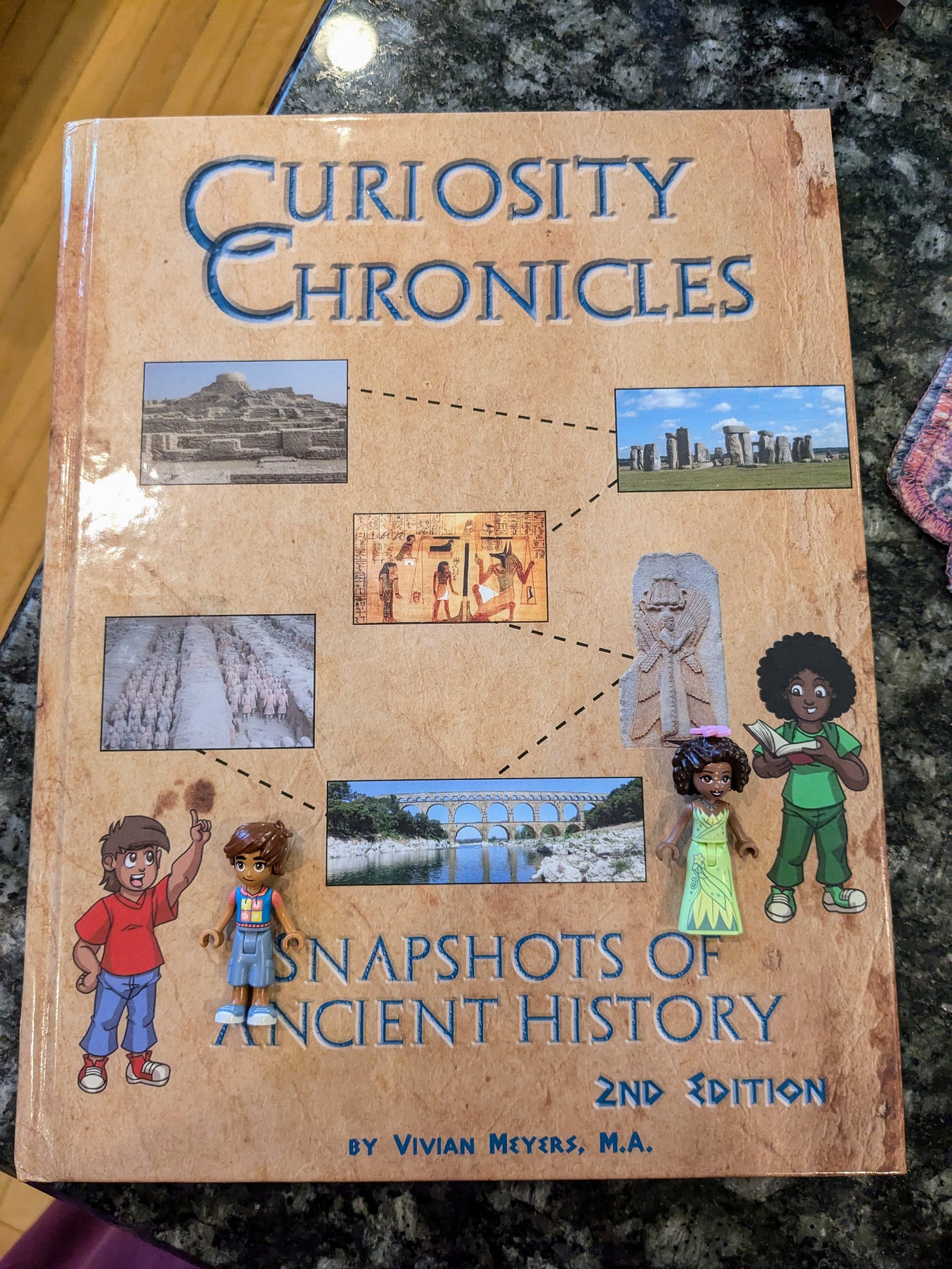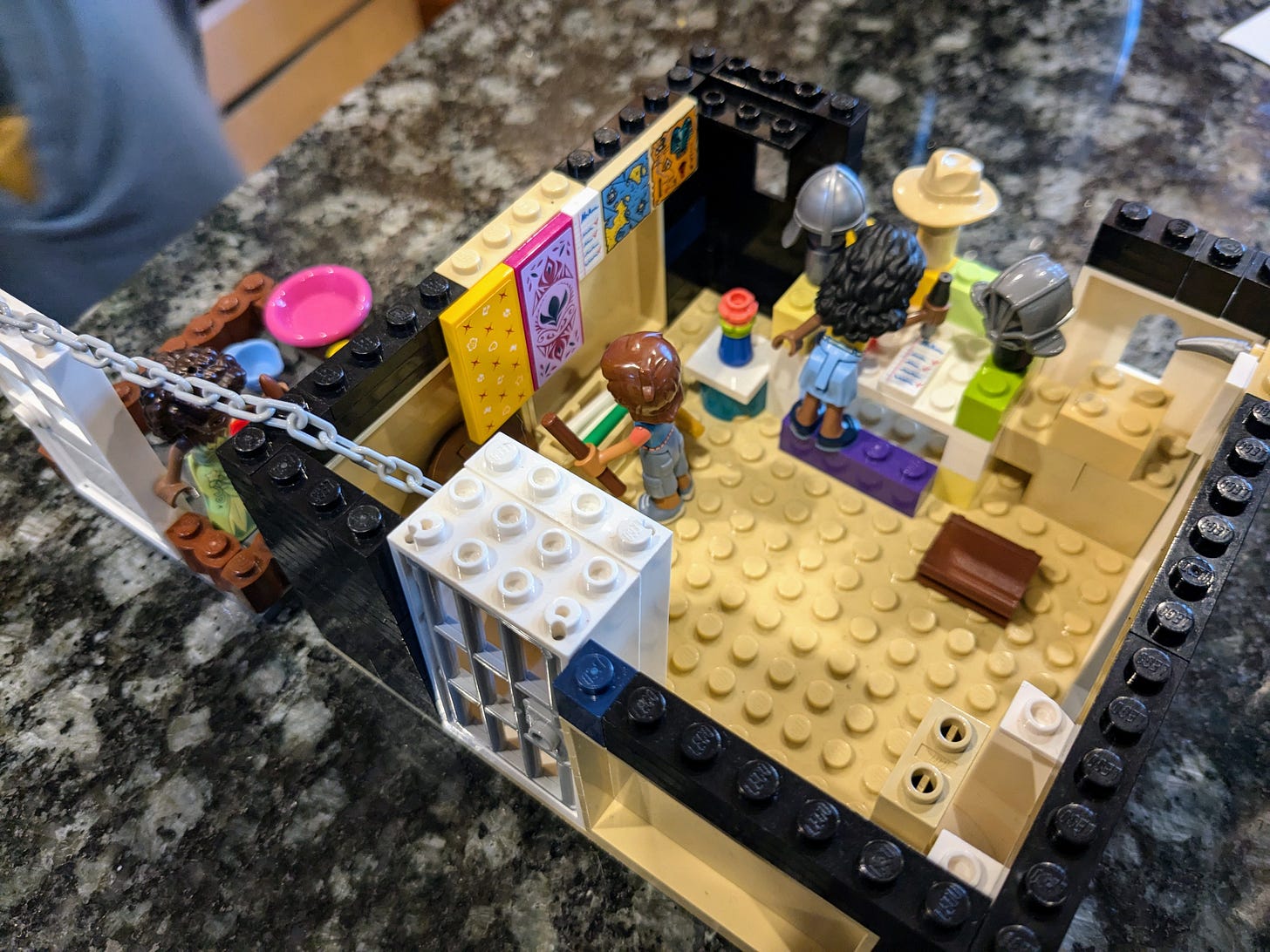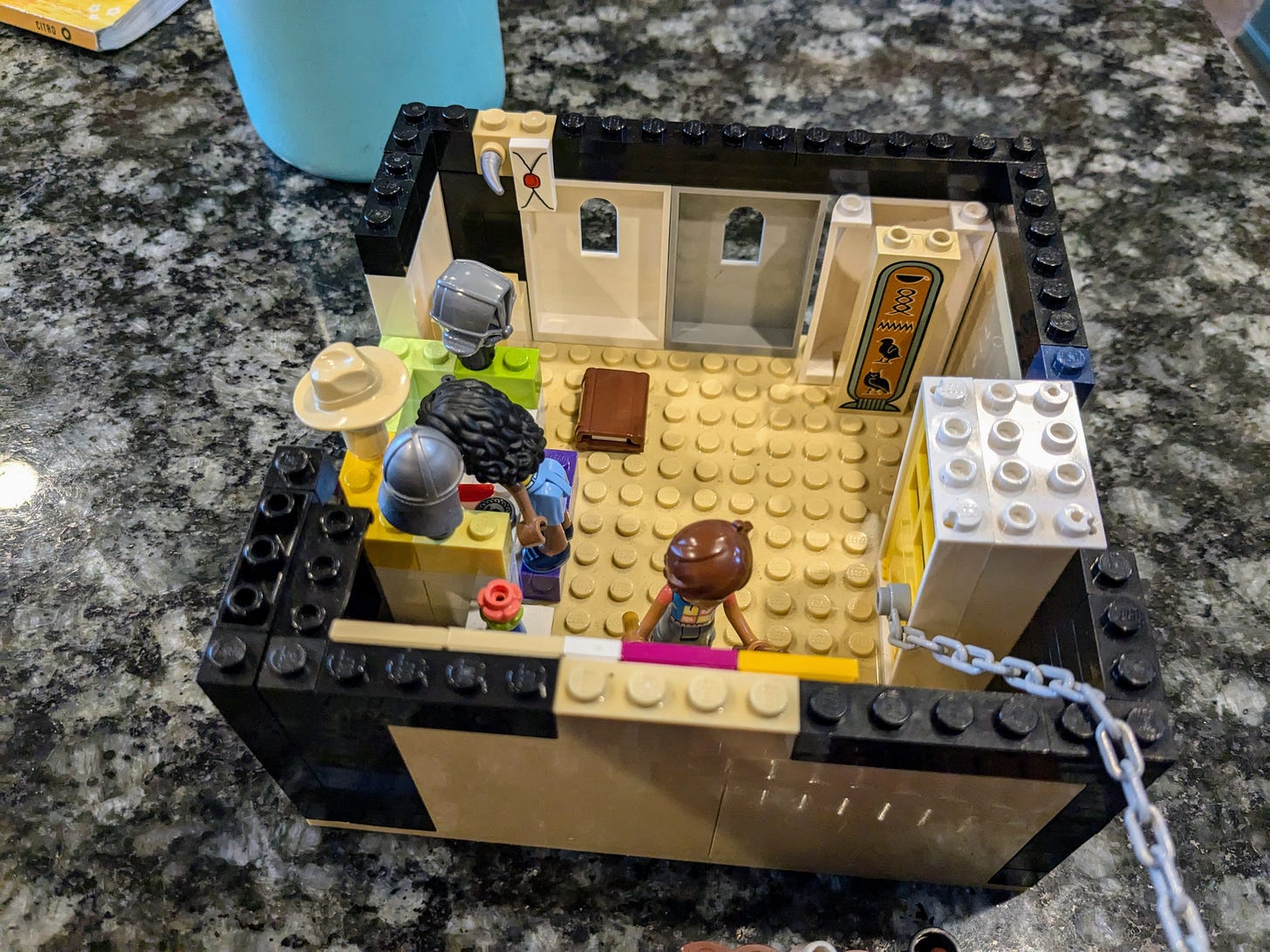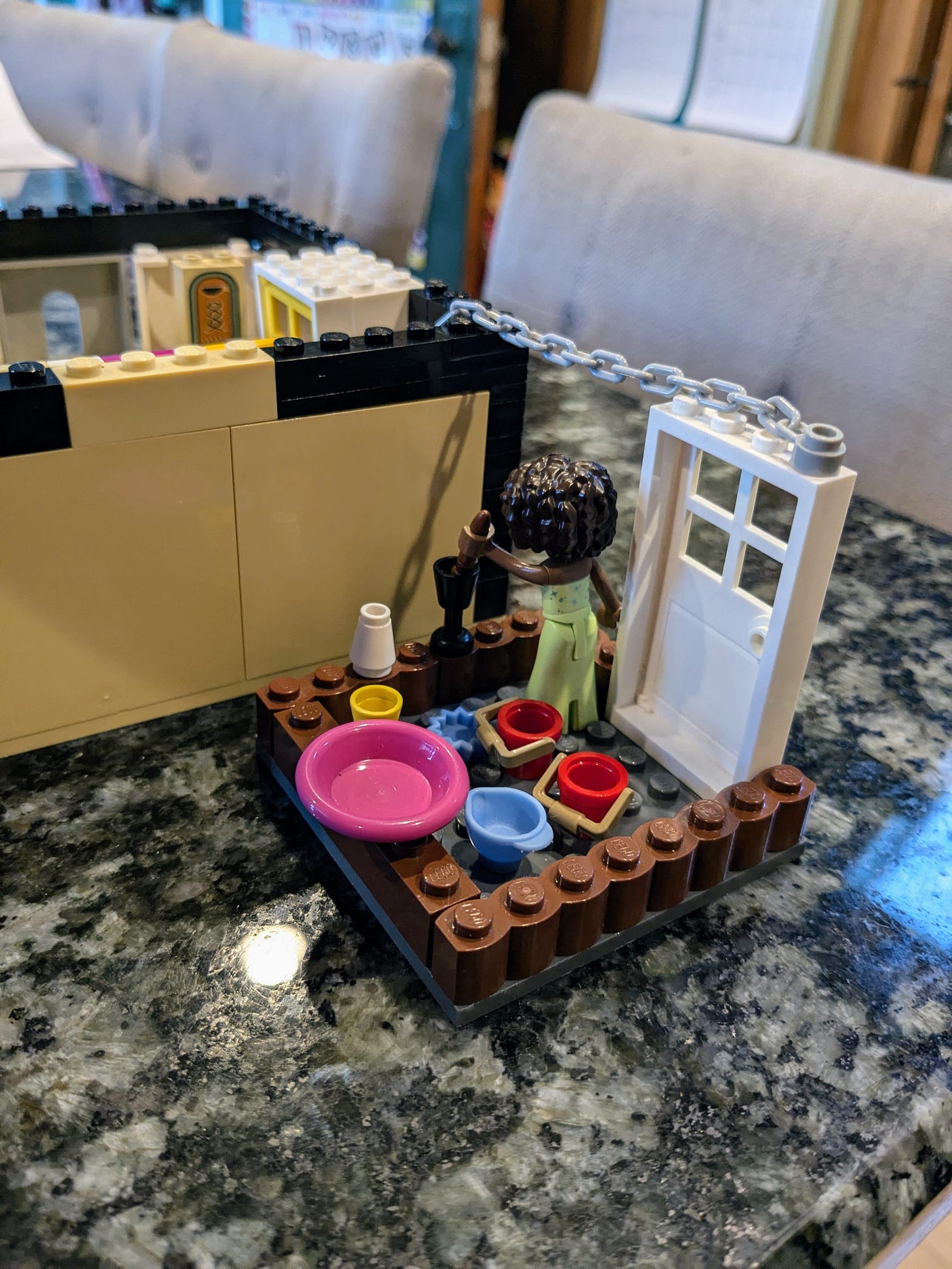
Two or three months in, I am still loving the Curiosity Chronicles: Ancient History curriculum that we got for Corinne this year. What’s more, they’re loving it too.
Instead of a third-person textbook, Curiosity Chronicles is set up in a question and answer format by two characters whose dialogue makes up the entire book (more about their format choice here). As they highlight on their Neurodivergent Benefits page,
Ted is our questioning-asking king. Often, he's asking the question ADHD learners want to know. That means learners get the answer right away and don't have to wander off to find out. This helps keep learners focused.
Mona is the queen of answering questions—and answering the question behind the question. Our books are written for autistic learners who want thorough, meaty answers to their questions instead of surface-level answers.
Can I tell you just how many times Corinne yells out a question that is literally the next line of Ted’s dialogue? I can’t, because I haven’t bothered to keep count, but it’s not uncommon.
At first, we alternated reading: I would read Mona’s part and Corinne would read Ted’s. Now they prefer that I read it all to them while they’re coloring or doing something else with their hands. We’ve dropped the interactive notebook component but still keep up with the student workbook; what’s homeschooling if not an endless tweaking of what is and isn’t working, after all?
Lately, they’ve been hungry to learn. I request many of the picture and nonfiction books listed in the instructor’s guide from the library and we sometimes watch videos that correlate from Crash Course: World History. If there isn’t enough supplemental material like that, Corinne demands to go on to the next chapter. I love watching them hunt knowledge down like prey (and am grateful for the workbook to check that at least some of it is sticking).

Two weeks ago, I came home from work to a newly-created Lego history lab. There were old tapestries, unearthed pottery, Egyptian hieroglyphs, and more in a neat little room. Ted and Mona and their friend (who at one point was “the learning princess Tiana” but may have since changed) were busy cataloging their artifacts.
When we reached the chapter called “India Writes the Vedas,” Corinne squealed and had her Mona figure say, “That must be what this book we found was!” We learned about Hatshepsut’s expedition to Punt that brought back live Myrrh trees, so in went a plant on the small white table. Perhaps my favorite are the tan bricks seen above blending into the top right corner: those are some of the identical bricks found by British railway workers that led to the discovery of the Indus Valley civilization.
Almost all of these are Corinne additions, though with each new chapter, they ask for my help figuring out what we can add. Yesterday we learned about the Nok culture in West Africa and their pottery and iron smelting. I think Corinne finally settled on a blue hairbow piece to represent part of an iron-forged necklace, along with more pottery, of course. The pottery by this point has its own annex - almost every culture has left behind pottery except the Caral-Supe in South America, so we struggled to find something for them! They ended up being the inspiration for the flute-like instrument Ted is holding.
I literally could not have devised a better hands-on extension had I thought for weeks, and this was something Corinne came up with on their own! It’s so wonderfully tactile that I know the information is getting wedged in their brain. I’ve long loved Legos for their open-ended play capabilities - it’s so fun walking into the playroom with Corinne and brainstorming together what pieces could represent ancient artifacts from various civilizations.
I’m not sure how much we will be able to add to the history room in the next few chapters because they are going to be much more idea-based: we’ll cover the Iliad and the Odyssey, the beginnings of Buddhism and Confucianism, and the Peloponnesian War. The chapter titled “The Olmec Play Ball” is definitely promising, though; we will have to hunt down some little Lego spheres.

Somehow, we are already halfway through the textbook at the end of October. I wasn’t expecting to go through it so quickly but we’re both having so much fun. The next big decision will be whether to move straight into their Medieval History curriculum or detour and do Crash Course: Mythology or something more supplemental. Though skimming the Table of Contents1 for Medieval History…I’m ready to dive in:
Black Powder Booms in China
Murasaki Writes a Novel
England Gets Invaded for the Last Time
Genghis Conquers (Almost) Everyone
The Aztecs Build a Floating City
Europe Goes and Finds the Rest of the World
I mean, doesn’t all that sound cool? I’m a proud history nerd. One of the best parts for me has been expanding old knowledge and adding new - like the Indus Valley and Caral-Supe civilizations, neither of which I’d heard of. Ancient history was a long time ago (pun intended) for me and has never been my favorite area to study, so if Curiosity Chronicles is making me this engaged already, I can’t wait for the next few levels.
I love how the chapter titles read like headlines, sometimes snarky ones.


I would have loved to learn history this way.